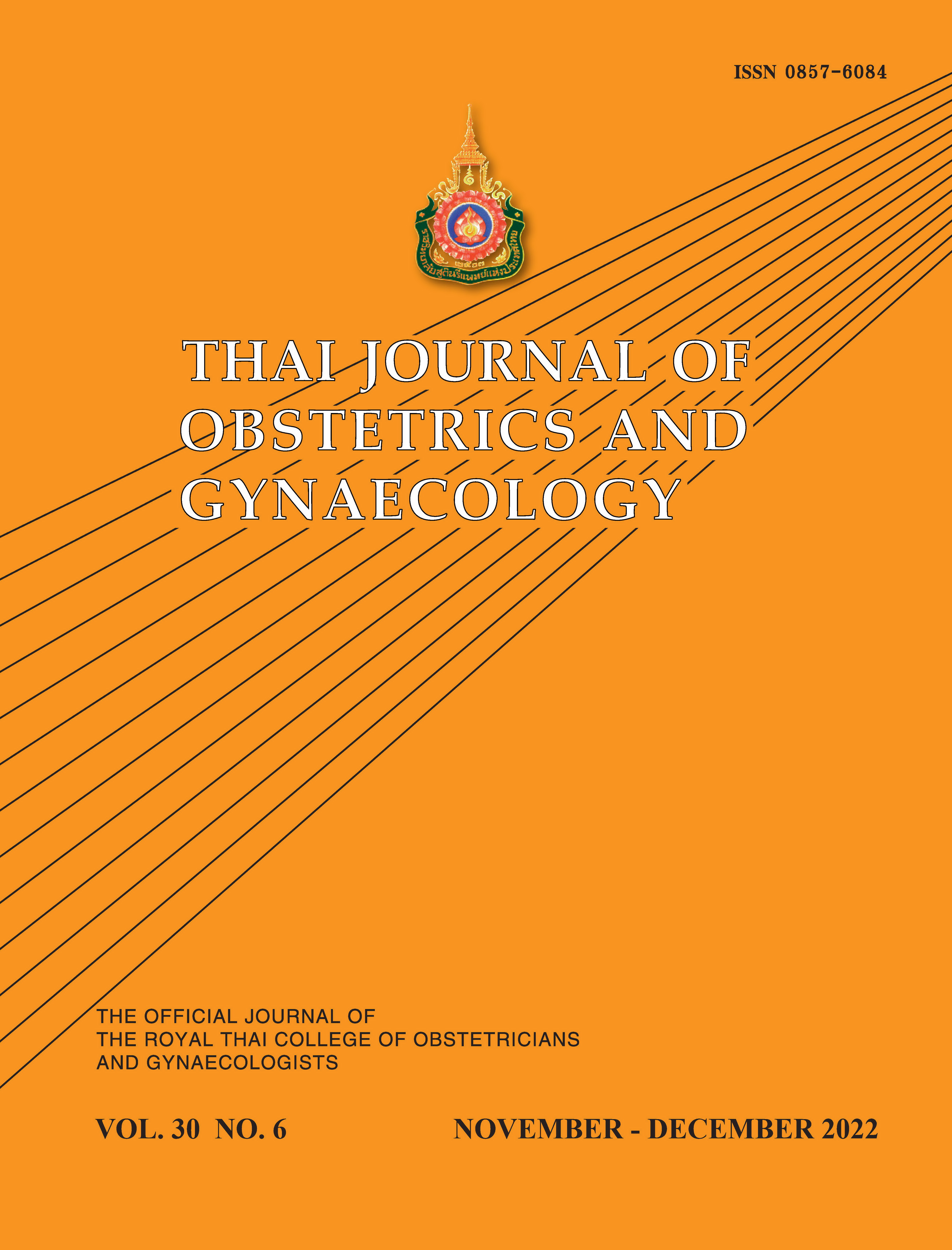Single Blade Forceps versus Manual Delivery of Fetal Head during Cesarean Section: A randomized controlled trial
Main Article Content
Abstract
Objective: We aimed to compare the efficacy of single blade forceps vs. manual delivery during cesarean section vis-à-vis time to deliver the fetal head and maternal and neonatal outcomes.
Materials and Methods: One hundred and forty-four pregnant women were randomly assigned to single blade forceps or manual delivery. The women were term, singleton, cephalic presentation, undergoing a low transverse cesarean section under spinal anesthesia. The primary outcome was time to deliver the fetal head. The secondary outcomes included operative time, maternal outcomes (unintended excision of uterine incision, uterine vessels injury), neonatal outcomes (APGAR score at 5 and 10 min, oxygen need for resuscitation, and neonatal injury), and surgeon satisfaction.
Results: Baseline characteristics were comparable between groups except for the type of skin incision. Median time to delivery of the fetal head using single blade forceps was statistically shorter than using the manual delivery (24.50 s (IQR, 10.50-41.50) vs. 45.00 s (IQR, 19.50-92.00), p-value < 0.001). Similar results occurred for operative time, maternal outcomes, neonatal outcomes, and surgeon satisfaction. Minor neonatal injury was 9.72 percent in the single blade forceps group.
Conclusion: Using single blade forceps shortened the delivery of the fetal head during cesarean section without serious maternal and neonatal complications. Minor neonatal injury was more common in the single blade forceps group than the manual delivery group.
Article Details

This work is licensed under a Creative Commons Attribution-NonCommercial-NoDerivatives 4.0 International License.
References
2. Hema KR, Johanson R. Techniques for performing caesarean section. Best Pract Res Clin Obstet Gynaecol 2001;15:17-47.
3. Martin JA, Hamilton BE, Osterman MJ, Driscoll AK. Births: final data for 2019. Natl Vital Stat Rep 2021;70:6-37.
4. Hanvoravongchai P, Letiendumrong J, Teerawattananon Y,Tangcharoensathien V. Implications of private practice in public hospitals on the cesarean section rate in Thailand. HRHDJ 2000;4:2-12.
5. Anekpornwattana S, Yangnoi J, Jareemit N, Borriboonhiransan D. Cesarean section rate in Siriraj hospital according to the Robson classification. Thai J Obstet Gynaecol 2020;28:6-15.
6. Suwanrath C, Chunuan S, Matemanosak P, Pinjaroen S. Why do pregnant women prefer cesarean birth? A qualitative study in a tertiary care center in southern Thailand. BMC Pregnancy Childbirth 2021;21:23.
7. Cunningham FG, Leveno KJ, Bloom SL, Dashe JS, Hoffman BL, Casey BM, et al. Williams Obstetrics. 25th ed. New York: McGraw-Hill 2018:567-90.
8. Kotdawala PJ, Pandya MJ. Difficulty in the Delivery of a Baby During LSCS. In: Gandhi A, Malhotra N, Malhotra J, Gupta N, Bora N, eds. Principles of Critical Care in Obstetrics. New Delhi: Springer 2006:355-68.
9. Dalvi SA. Difficult Deliveries in Cesarean Section. J Obstet Gynaecol India 2018;68:344-8.
10. Andersen HF, Auster GH, Marx GF, Merkatz IR. Neonatal status in relation to incision intervals, obstetric factors, and anesthesia at cesarean delivery. Am J Perinatol 1987;4:279-283.
11. Datta S, Ostheimer GW, Weiss JB, Brown WU Jr, Alper MH. Neonatal effect of prolonged anesthetic induction for cesarean section. Obstet Gynecol 1981;58:331-5.
12. Maayan-Metzger A, Schushan-Eisen I, Todris L, Etchin A, Kuint J. The effect of time intervals on neonatal outcome in elective cesarean delivery at term under regional anesthesia. Int J Gynaecol Obstet 2010;111:224-8.
13. Palan A, Agrawal NK. Effect of induction delivery time on Apgar score in lower segment cesarean section under spinal anesthesia. J Sci Res 2016;9:20-3.
14. Danylyshyn-Adams K, Young E, Crnosija N, Sise MV. Time from uterine incision-to-delivery in cesarean deliveries and associated neonatal outcomes. Obstet Gynecol 2016;127:79S.
15. McQuivey RW, Block JE. Vacuum-assisted cesarean section. Int J Womens Health 2017;9:151-5.
16. Banu F, Pandit U, Ahmad S, Singh G. Effectiveness of vacuum extraction during cesarean section- A pioneer pilot study. SJMPS 2016;2:291-4.
17. Waterfall H, Grivell RM, Dodd JM. Techniques for assisting difficult delivery at caesarean section. Cochrane Database Syst Rev 2016;1.
18. Wahab A, Abolouz A. Comparison between forceps, single blade forceps and manual extraction of fetal head in elective cesarean section: A randomized controlled trial. Open J Obstet Gynecol 2018;8:31-8.
19. WHO, CDC, ICBDSR. Birth defects surveillance: a manual for programme managers. World Health Organization 2020;2:3-5.
20. Purisch SE, Ananth CV, Arditi B, Mauney L, Ajemian B, Heiderich A, et al. Effect of delayed vs. immediate umbilical cord clamping on maternal blood loss in term cesarean delivery A randomized clinical trial. JAMA 2019;322:1869-76.
21. Dahlke JD, Mendez-Figueroa H, Rouse DJ, Berghella V, Baxter JK, Chauhan SP. Evidence-based surgery for cesarean delivery: an updated systematic review.
Am J Obstet Gynecol 2013;209:294-306.
22. Swain S, Sagarika N, Satpathy RN, Mahapatra PC. Assisted delivery of mobile fetal head: a comparison of forceps, vacuum and assisted manual extraction of head at caesarean section. IJRCOG 2017;6:4065-70.
23. Bofill JA, Lencki SG, Barhan S, Ezenagu LC. Instrumental delivery of the fetal head at the time of elective repeat cesarean: A randomized pilot study. Am J Perinatol 2000;17:265-9.


